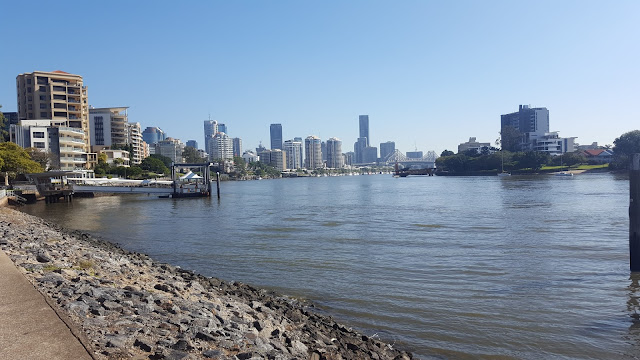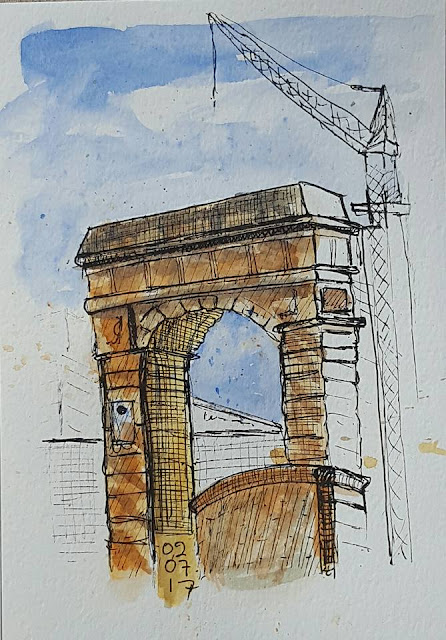Queensland scientist Dr William Hobbs (1822-1890) house, known as Adelaide House because it was built on Adelaide street, was built in 1855. It sits in the grounds of St Johns Cathedral, and is heritage listed. Dr Hobbs arrived at Moreton Bay on 1 May 1849 as surgeon of the
Chaseley, the second of John Dunmore Lang
's migrant ships.
In 1889 the house was leased by the government for the Governor General, because Government House at George street was not yet finished. This made Dr Hobbs house the First Government House in Brisbane.
On December 10th 1859, Governor George Bowen read the proclamation of the
new colony of Queensland - separate from New South Wales - from the
verandah of Adelaide House to the people of Brisbane.
When the construction of
Government House at the river end of George St was completed in 1862,
Governor Bowen moved there; this allowed Dr Hobbs to return to his
house. He decided to rename it Bowen House in honour of the governor. Dr
Hobbs sold the property in 1883 to the then wealthy
dentist-entrepreneur Moses Ward, who decided to call it Adelaide House once again. Ward never lived there.
In 1899, the property was
acquired by the Anglican Diocese of Brisbane for the new cathedral.
Originally to be demolished, the house ended up being used as the
residence for the deans and their families. Robin Dods was engaged to
renovate the house for this purpose, and that was completed in 1910. The house is now known as "The Deanery"
In his day, Dr Hobbs would walk up towards Adelaide House, or ride in a buggy, up
from Petrie Bight through the site of Grocon's 480 Queen Street tower
which sits between Queen and Adelaide streets.
The natural flow of the land in the mid-1850s rolled down from the
cathedral grounds, down across what is now Adelaide Street towards the
bend in Queen Street and across Petrie Bight before the Story Bridge was
built.
Adelaide House sat on top of the hill by itself until the
12-metre high road road cutting for the Adelaide Street extension
towards what became Fortitude Valley was built in the 1870s. At the time Adelaide House was known as "Hobb's Folly" because it was so far from the main Brisbane settlement. Grocon's chief executive Carolyn Viney said the company had decided to
name the park Hobbs Park because the general public could finally see
Adelaide House.
A4 sketchbook and ink.
It was on this balcony that Governor George Bowen read the proclamation of the
new colony of Queensland - separate from New South Wales.

































